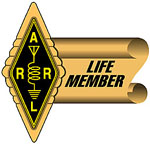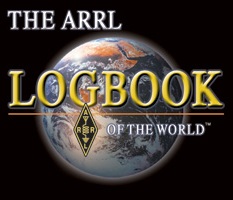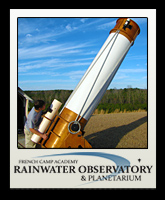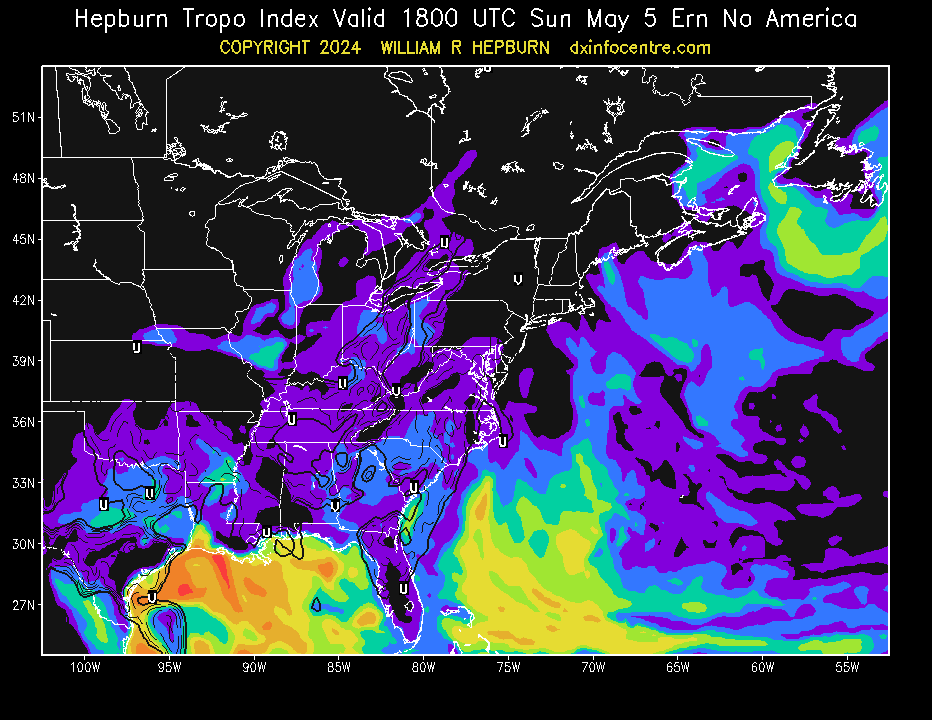VHF/UHF Weak Signal Page
| Current 144 MHz Band Conditions (Click for Details) | |||
| WWV Alert Message | Data from DXRobot | ||
| 144 Es in N.A. | Aurora | 144 Es in Europe | Today's MUF & Es |
 |

|
 |
 |
| The "Today's MUF / Es" shows the daily 144MHz High MUF |
|||
| Last 100 Spots on 50 MHz (And other bands) | |||
VUCC Totals
This is a list of my VHF/UHF Century Club Program (VUCC) totals.
Content last changed: March 29 2025 20:32:02
| Award | Worked | Label | QSL sent | Confirmed | Submit | Checked | Total | Tot Conf |
| MIX | 8 | . | 18 | 257 | . | . | 283 | 257 |
| PHO | 2 | . | 22 | 215 | . | . | 239 | 215 |
| CW | 4 | . | . | 8 | . | . | 12 | 8 |
| DIG | 14 | . | . | 122 | . | . | 136 | 122 |
| IMG | . | . | . | . | . | . | . | . |
| Mode Total | 20 | . | 22 | 345 | . | . | 387 | 345 |
| 50MHz | 8 | . | 18 | 257 | . | . | 283 | 257 |
| 70MHz | . | . | . | . | . | . | . | . |
| 144MHz | . | . | . | 2 | . | . | 2 | 2 |
| 220MHz | . | . | . | . | . | . | . | . |
| 440MHz | . | . | . | 1 | . | . | 1 | 1 |
| Sat | . | . | . | . | . | . | . | . |
| Band Total | 8 | . | 18 | 260 | . | . | 286 | 260 |
|
Solar-Terrestrial Data |
I have always had an interest in the VHF/UHF Weak Signal segment of our Ham Radio hobby. Back in my younger days I worked a lot of 50 MHz, 144 MHz, 220 MHz, and 432 MHz. I worked some EME (Earth-Moon-Earth, or Moon Bounce) during those days back in the 70's and early 80's. You may ask what do I mean by "VHF/UHF Weak Signal"? What I am talking about is mainly working in the CW and SSB segments of these bands over great distances or running EME. I worked satellites during those times, also. I had several great mentors in the VHF/UHF Weak Signal arena. George Chaney, W5JTL (SK) of Vicksburg, MS; Rex Turner, W5RCI (SK) of Marks, MS; Paul Wilson, W4HHK (SK) of Collierville, TN; and George Tew, NC5Y (SK) of Jackson, MS were my mentors in this area of our hobby. You can read about them on my "Mentors" page.
George Chaney, Rex, and I would talk every morning and every night. We would normally get on around six in the morning and at eight at night. We would talk about construction or antenna projects we were working on. Back in those days I had stepped up to a Kenwood TS-700S. This was the 10 watt all mode 2 meter transceiver. When trying to work contests or distant weak signal stations I had a pair of 4CX250B's that could be easily driven by this rig. I remember one Sunday night George Chaney and I were talking to each other. I was running about 3 watts and had my beam pointed towards Vicksburg. After awhile, a station broke in and asked where we were. George went back to him and told him and he replied, that he was a WA2 in Poughkeepsie, NY. For the next hour or so, the lower end of 144 MHz sounded like 20 meters during the CQWW DX Contest! That was some of the best fun I ever had. I worked tons of new states and grids that night and if it were not for all the QRM on the bands, I could have worked even more. I never turned my antenna and never flipped on the amp!
Hepburn Tropo Index Map:
HF 10 Meter (28 MHz) Propagation Map:
This map uses 10 meter spots to compile it’s 28 MHz propagation map. It is real time, but you must manually Refresh this page. Click on the map and the spots with the callsigns will be listed and is clickable. Click on the callsign for their detailed information. Distance is measured in kilometers.
VHF(50 MHz) Propagation Map:
This map uses 6 meter spots to compile it’s 50 MHz propagation map. It is real time, but you must manually Refresh this page. Click on the map and the spots with the callsigns will be listed and is clickable. Click on the callsign for their detailed information. Distance is measured in kilometers.
VHF(70 MHz) Propagation Map:
This map uses 4 meter spots to compile it’s 70 MHz propagation map. It is real time, but you must manually Refresh this page. Click on the map and the spots with the callsigns will be listed and is clickable. Click on the callsign for their detailed information. Distance is measured in kilometers.
VHF(144 MHz) Propagation Map:
This map uses APRS data to compile it’s 144 MHz propagation. It is real time, but you must manually Refresh this page. You must Zoom in for more detail. Look for yellow and red areas and hover over them to display the callsigns. Click on the callsign for their detailed information. Distance is measured in kilometers.
VHF(222 MHz) Propagation Map:
This map uses 1.25 meter spots to compile it’s 222 MHz propagation map. It is real time, but you must manually Refresh this page. Click on the map and the spots with the callsigns will be listed and is clickable. Click on the callsign for their detailed information. Distance is measured in kilometers.
UHF(432 MHz) Propagation Map:
This map uses 70 centimeter spots to compile it’s 432 MHz propagation map. It is real time, but you must manually Refresh this page. Click on the map and the spots with the callsigns will be listed and is clickable. Click on the callsign for their detailed information. Distance is measured in kilometers.
(SHF) Above 450 MHz Propagation Map:
This map uses Super High Frequency UHF/Microwave spots to compile it’s this propagation map. It is real time, but you must manually Refresh this page. Click on the map and the spots with the callsigns will be listed and is clickable. Click on the callsign for their detailed information. Distance is measured in kilometers.
VHF/UHF Propagation Modes:
VHF and UHF are not thought to be bands where propagation affects your signal, but there are times when your signal will propagate well beyond their normal limits. VHF/UHF "Openings" happen sporatically and you cannot predict them as well as HF propagation. VHF and UHF can be affected by the following conditions, though:
Tropo - Tropospheric signals happen in the part of the atmosphere close to the surface and up to about 25,000 feet or 7,620 meters. Such signals are thus directly affected by weather systems up to several hundred miles. A major storm system or a cold front that is approaching can create Tropo openings. As it cools in the evenings it can create Tropo openings, as it is in the morning when the inverse happens, cool to warm conditions. When it is very warm and there is a high pressure system with cloudless and windless skies, Tropo will improve weak signals from distant stations. Another symptom of Tropo conditions is when adjacent TV stations on the same channel start to interfere with each other. Summer and Fall are the best times for Tropo openings and UHF signals can be enhance to distances up to about 1,000 miles or 1,600 kilometers or more for single hops. At sunset the upper air and surface air cool at different rates causing a temperature inversion. A similar effect happens at sunrise. Normally VHF/UHF signals travel into space but the inversion effectively reduces sky wave radiation from a transmitter. With temperature inversion the signal is refracted over the horizon rather than continuing into outer space. Fog also produces Tropo openings. The heating of the upper level of the fog causes a temperature inversion. It occurs in the evening an continues overnight and clears at sunrise over a period of around 4 - 5 hours.
Sporadic E - Sporatic E is an unusual form of radio propagation using characteristics of the Earth's Ionosphere. Whereas most forms of skywave propagation use the normal and cyclic ionization properties of the ionosphere's F region to refract or bend radio signals back toward the Earth's surface, Sporadic E propagation bounces signals off smaller "clouds" of unusually ionized atmospheric gas in the lower E region that is located at altitudes of approximately 55 to 100 miles or 90 to 160 km. This occasionally allows for long-distance communication at VHF frequencies not usually well-suited to such communication. Sporadic E occurs during June-July and early August and again in December and January. As the name suggests this condition is very sporadic and learn how to be patient in your waiting for it to occur.
Aurora - The Northern Lights or Aurora Borealis occurs in the northern parts of Canada and can also be seen from northern United States, Europe, and Asia. The Southern Lights or Aurora Australis happen in high southern latitudes in Antarctica, Australia, New Zealand, and South Ameriaca. Aurora is caused by a solar storm or Coronal Mass Ejection (CME) that hits the Earth's Magnetosphere and can have an effect on radio propagation. If can affect VHF and UHF propagation in a positive manner and HF propagation in a negative manner. To use the aurora you should point your antenna north to work a station to the south as signals bounce back from the aurora in the Northern Hemisphere and the opposite in the Southern Hemisphere.
Click link on contest below to see current year dates/times/rules.
| VHF+ Contest Calendar | |
| Name | Month |
| WASH 2m Simplex Contest | January |
| ARRL January VHF Contest | January |
| CSVHFS Spring 2m Sprint | April |
| CSVHFS Spring 222 Sprint | April |
| CSVHFS Spring 432 Sprint | April |
| CSVHFS Spring Microwave Sprint (903 MHz and above) | May |
| CSVHFS Spring 6m sprint | May |
| Maritime QSO Party | June |
| ARRL June VHF Contest | June |
| SMIRK 6m Contest | June |
| IARU Region 1 50 MHz Contest | June |
| CQ Worldwide VHF Contest | July |
| NJ QSO Party | July |
| ARRL UHF Contest | August |
| SEVHFS Fall 6m Sprint | August |
| ARRL September VHF Contest | September |
| SEVHFS Fall 2m Sprint | September |
| SEVHFS Fall 222 Sprint | September |
| SEVHFS Fall Microwave Sprint (903 MHz and above) | September |
| SEVHFS Fall 432 Sprint | October |
| PA QSO Party | October |
| NY State QSO Party | October |
| RAC Canada Winter Contest | December |
| VHF+ Contest Calendar | |
| Name | Date |
| Ohio ARES Simplex Contest | Saturday, 08 January (10 AM - 4 PM EST) |
| WASH 2m Simplex Contest Southwest PA |
Saturday, 08 January (7 PM - 11 PM EST) phone, CW, digital |
| ARRL January VHF Contest | Saturday, 15 January (1900 UTC) - Monday, 17 Jan (0359 UTC) |
| Maine 2m FM Simplex Challenge | Saturday, 02 April (12:00 noon - 4:00 PM Eastern) |
| CSVHFS Spring 2m Sprint | Monday, 11 April (7 PM - 11 PM local) |
| CSVHFS Spring 222 Sprint | Tuesday, 19 April (7 PM - 11 PM local) |
| IARU Reg. 1 50 MHz MGM Contest | Saturday, 16 April 1400Z - Sunday, 17 April 1400Z |
| Ontario QSO Party | Saturday, 16 April 1800Z - Sunday, 17 April 0500Z and Sunday, 17 April 1200Z - 1800Z |
| CSVHFS Spring 432 Sprint | Wednesday, 27 April (7 PM - 11 PM local) |
| San Bernardino Microwave Society 2.3 GHz and up Contest |
24 hrs total Sat, 30 April (6 AM local) - Sun, 01 May (11:59 PM local) |
| CSVHFS Spring Microwave Sprint (902 MHz and above) |
Saturday, 07 May (8 AM - 2 PM local) |
| CSVHFS Spring 6m Sprint | Saturday, 14 May (2300 UTC) - Sunday, 15 May (0300 UTC) |
| ARRL June VHF Contest | Saturday, 11 June (1800 UTC) - Monday, 13 June (0259 UTC) |
| SMIRK 6m Contest | June 18 (0000Z) to June 19 (2359Z) |
| IARU Region 1 50 MHz CW/SSB Contest | Saturday, 18 June (1400 UTC) - Sunday, 19 June (1400 UTC) |
| CQ Worldwide VHF Contest | Saturday, 16 July (1800 UTC) - Sunday, 17 July (2100 UTC) |
| 222-MHz-and-Up Distance Contest | Saturday, 06 August (1800 UTC) - Sunday, 07 August (1759 UTC) |
| 10 GHz and Up Contest - First Round | 24 hrs total Saturday, 20 August (0600 UTC) to Sunday, 21 August (11:59:59 PM local) |
| Fall 6m Sprint | Saturday, 13 August (2300 UTC) to Sunday, 14 August (0300 UTC) |
| ARRL September VHF Contest | Sat 10 September (1800 UTC) to Mon 12 September (0259 UTC) |
| 10 GHz and Up Contest - Second Round | 24 hrs total Saturday, 17 September (0600 UTC) to Sunday, 18 September (11:59:59 PM local) |
| SE VHF Society Fall 2m Sprint | Monday, 19 September (7 PM - 11 PM local) |
| SE VHF Society Fall 222 Sprint | Tuesday, 27 September (7 PM - 11 PM local) |
| SE VHF Society Fall 432 Sprint | Wednesday, 05 October (7 PM - 11 PM local) |
| SE VHF Society Fall Microwave Sprint (902 MHz and above) |
Saturday, 08 October (8 AM - 2 PM local) |
| PA QSO Party | Saturday, 08 October (1600 UTC) to Sunday, 09 October (0400 UTC) and Sunday, 09 October (1300 UTC - 2200 UTC) |
| NY State QSO Party | Starting Saturday, 16 October (10 AM Eastern) and lasting 12 hours |
| UK 6m Group Winter Contest | Tuesday, 01 December, 2022 (0000 UTC) to Sunday, 31 January, 2023 (23:59:59 UTC) |
| 2 Meter SSB Nets and Groups | ||
| Name | Time | Frequency |
| The 205 Morning Group | 8 AM Eastern daily | 144.205 Northeast US |
| Beam Spinners | 8 AM local daily | 144.200 Sun - WA7KYM DN71 Mon-Wed & Sat - KG0OR |
| Northern Lights Radio Society | Sunday 9 PM CST | 144.260 KA0PQW EN33 |
| Lowcountry Digital | Sunday 8:30 PM Eastern Wednesday 8 PM Eastern | 145.700 KH6TY FM02 |
| Western States Weak Signal Society - Disbanded as of January 2007 | Sunday 5:30 Pacific | 144.200 K6TSK DM03 N8DEZ DM04 |
| Pacific Northwest VHF Society | Sunday 8 AM local Tuesday 8 PM local | 144.240 |
| ECVHFS | Sunday 10:30 AM Eastern | 144.250 K2SMN FN20 |
| St. Pete | Sunday 8:15 PM Eastern | 144.210 WA4GCH EL87 |
| Roadrunners Microwave Group | Sunday 9 PM Central | 144.150 K5LLL EM10 |
| Packrats | 8 PM Eastern | 144.150 N3ITT FN20 |
| N0PB | Monday 8 PM Central | 144.250 N0PB EM39 |
| Florida SSB | Monday 7 PM Eastern | 144.210 WA4JWU EL98 |
| Rocky Mountain VHF | Monday 8 PM local | 144.220 W0EDW DN70 K0MLM DN70 |
| Upper Rio Grande | Monday 8 PM local | 144.250 NM5F DM65 |
| Guelph (Ontario) | Monday 9 PM Eastern Wednesday 9 PM Eastern | 144.245 VE3XTM EN93 |
| San Diego | Tuesday 7 PM local | 144.230 W6IPT DM13 |
| Mud Toads | Tuesday 8:30 PM local | 144.175 N4RZP FM17 |
| W5VHF | Monday 8 PM Local | 144.190 KD5ZVE EM26 K5SW EM25 |
| North GA | Monday 8 PM Eastern | 144.210 W4TMW EM84 |
| Quebec | Tuesday 8 PM Eastern | 144.240 VE2JWH FN35 VE2DC FN35 |
| AM Nostalgia | Tuesday 7 PM Central | 144.950 KC9CUK EN52 |
| Deep South Texas SWOT | Tuesday 9 PM Central | 144.250 N5SSH EL07 |
| The 144.240 Net | Wednesday 8 PM CDT (7 PM CST) | 144.240 WB9LYH EN54 |
| The 144.252 Net | Monday 8:30 PM Eastern | 144.252 K8TQK EM89 |
| North Texas SWOT | Wednesday 9 PM Central | 144.250 W5FKN EM13 |
| SWOT Net | Thursday 8 PM Central | 144.250 K5YG EM50 |
| OK SWOT | Thursday 8 PM Central | 144.250 KD5ZVE EM26 |
| SE Ohio SWOT | Thursday 8 PM Eastern | 144.250 AB8XG EM89 KD8DJE EM89 |
| Q5 net | Thursday 7 PM Central | 144.220 N9JBW EN61 |
| Northeast Weak Signal net | Thursday 8:30 PM Eastern | 144.250 W1COT FN31 |
| Atlantic SSB | Friday 8:30 PM Eastern | 144.240 WB4IXU EM86 |
| Chicago-Ohio | Friday 7 PM Central | 144.215 KD8IME EN71 |
| Chesapeake | Saturday 9:30 PM Eastern | 144.205 W3BFC FM18 |
| Atlantic Coast 2m SSB Net | Sunday 8:30 PM Eastern | 144.230 N5PIP EL96 |
| Central Texas 2m SSB Operating Event | Thursday 9:00 PM Central | 144.250 NE5B EM10 |
| 2m Road Runner Microwave Group Net | Sunday 9:00 PM Central | 144.150 K5RMG EM10 |
VHF/UHF Clubs:
- Mississippi Coast VHF Society
- SMIRK - Six Meter International Radio Klub
- Side Winders on Two Radio Club
- Central States VHF Society
- North East Weak Signal Group
- Kansas City Grid Bandits
- The Northern Lights Radio Society
- K8GP Grid Pirates Contest Group " Delmarva VHF and Microwave Society
- AA4ZZ Contest Team
- Carolina DX Association
- Roadrunners Microwave Group
- Ultra Highs Weak Signal Society
- The Society of Midwest Contesters
- Pacific Northwest VHF Society
- North Texas Microwave Society
- Mount Greylock Expeditionary Force
- Southeastern VHF Society
- Florida Weak Signal Society
- Badger Contesters
- Mt. Airy VHF Radio Club
- 144.205 Morning Group
- KC9BQA - Promoting VHF/UHF in Wisconsin and the Upper Midwest
- Alaska VHF-Up Group
- Rochester VHF Group
- Rocky Mountain VHF Plus
- Texas VHF
VHF/UHF Resources:
- ON4KST 50 MHz Chat (And other bands)
- Real Time HF QSO Propagation Map - 28 MHz
- Real Time VHF QSO Propagation Map - 50 MHz
- Real Time VHF QSO Propagation Map - 70 MHz
- Real Time VHF QSO Propagation Map - 144 MHz
- Real Time VHF QSO Propagation Map - 222 MHz
- Real Time UHF QSO Propagation Map - 432 MHz
- Real Time SHF QSO Propagation Map - >450 MHz
- 144 MHz APRS VHF Propagation Map (Zoom In to View)
- William Hepburn's Worldwide Tropospheric Ducting Forecasts
- 144 Mhz Propagation Logger
- 220 Mhz Propagation Logger
- UHF Propagation Logger
- 50 Mhz Propagation Logger
- VHF Schedule Setup
- VHF QSO Link
- Current Weather Fronts
- Propagation
- Weather
- Download WSJT Software for Meteor Scatter
- VHF/UHF Mailing List
- CQ VHF Magazine Website
- The K0NR Radio Site
- Icom U.S. Grid Square Map
- Contesting.com Mail Archives
- The DK5YA VHF Page


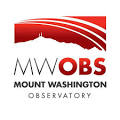
 Mt Washington Wx CAM
Mt Washington Wx CAM

